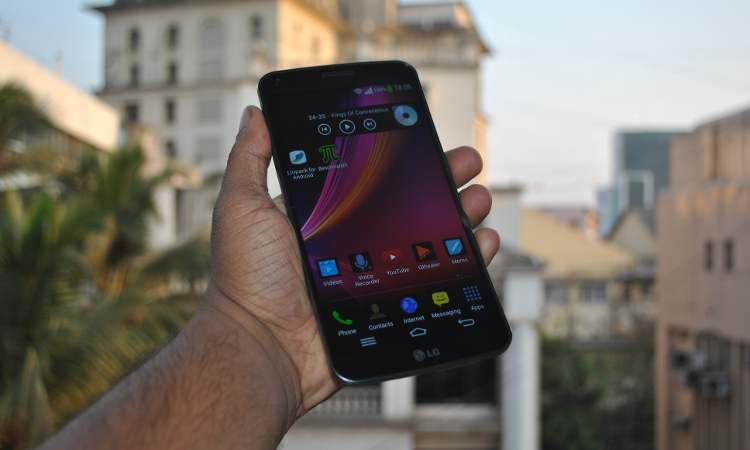All current range of smartphones sport the usual flat screen. LG decided to try something different and more futuristic with its new smartphone – the G Flex.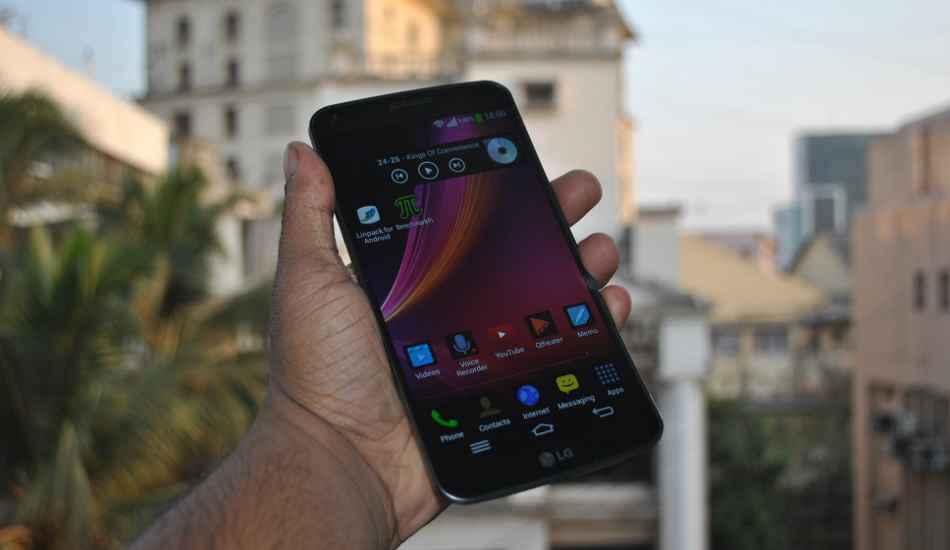
LG G Flex offers two major highlights that separates it from the usual lot – curved display and self-healing back panel. With reference to the curved display, we would like to clarify that is not as curved as portrayed in the promotional images. Also about self-healing back, we did not go overboard in order to test the limits of the back panel but results were satisfactory.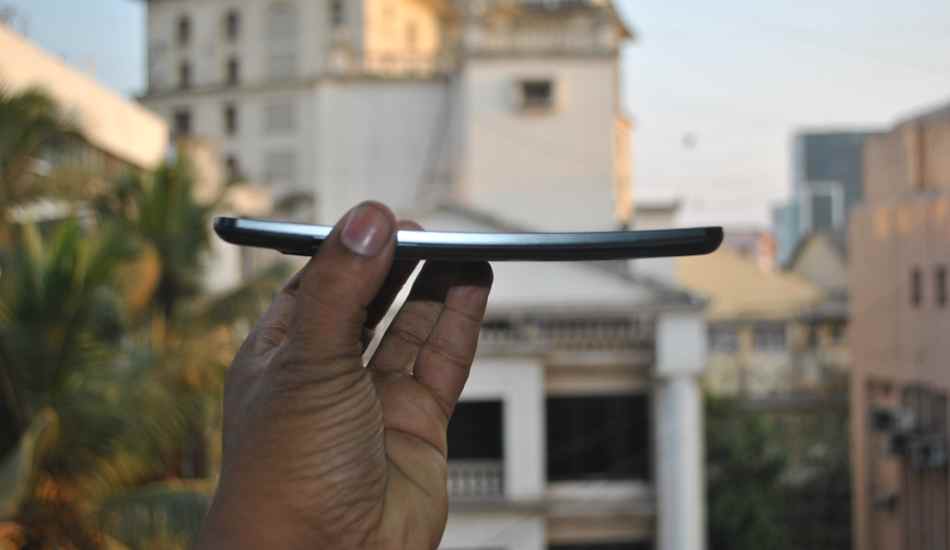
LG has packed top notch hardware in the G Flex to make it capable enough to compete with other premium smartphones with similar hardware. Infact, Samsung even teased LG by announcing the Galaxy Round which may not see the daylight in the Indian market. However, the G Flex can be easily compared with the large screen HTC One Max and Nokia Lumia 1520 in terms of size.
The G Flex sports a 6-inch display and clearly joins the phablet category. LG has introduced the G Flex in India at an MRP of Rs 69,999. We got lucky with an early access to the G Flex review unit and took it around for a spin.
Design
The model name G Flex and curved display are thrown together to interest any futuristic technology lover. When it comes to design, the G Flex is the curved re-incarnation of the LG G2 smartphone. At first instance, it feels someone placed a G2 in the back pocket and sat over it for a day. Though many flamed LG initially for pushing the location of power and volume buttons, the change was welcome than the usual smartphone designs.
At the launch of the G Flex, we were really impressed with the self healing back panel. The removable back panel has a special coating that touts self-healing capabilities like a mutant. Apparently, this self-healing is limited only to the keys and coins that are usually resting in the pocket. The back panel can not heal the scratches from really sharp objects (knives and blades) or other surfaces with an ability to put moderate pressure. The back panel also clings to dust so one has to keep wiping the entire phone – front and back, to get rid of the dust particles and make it appear good.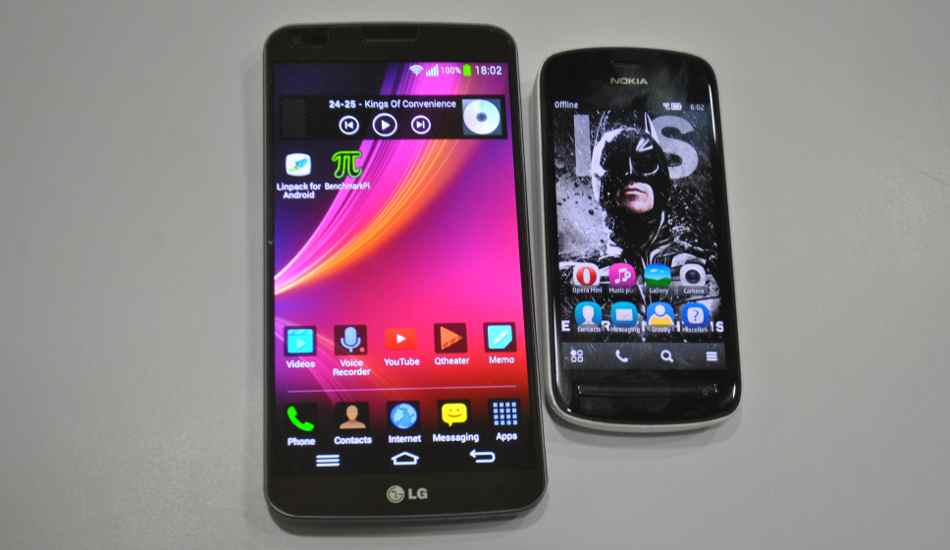
We tried to test the flexibility of the phone by applying pressure on its back to straighten it up. However, the creaking sounds made in number of attempts clearly made us realize – DO NOT try to flex or straighten this phone for more than necessary pressure can break this device. The name G Flex does stand right for the phone can be flexed a bit but is not flexible and bendable like the prototype displays. 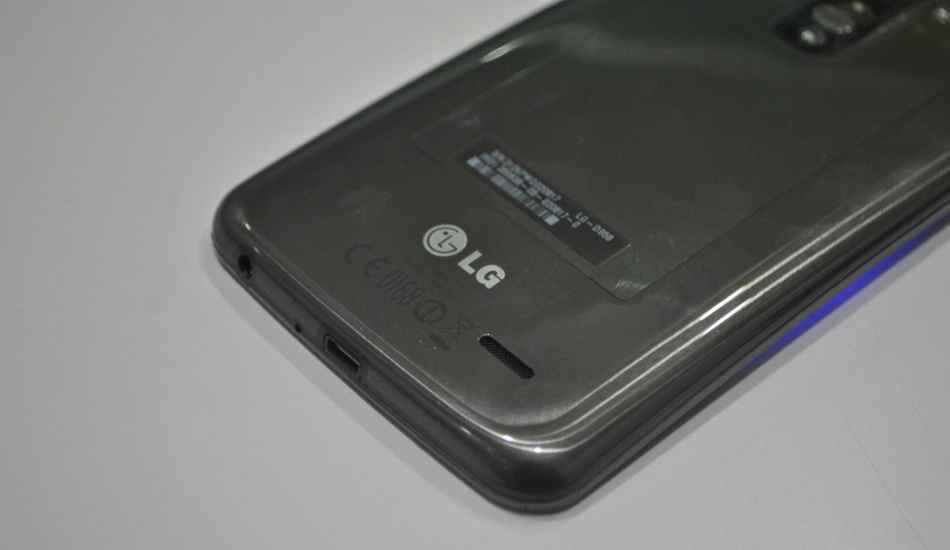
Of course, it took us a while to get accustomed with the enormous size of this 6-inch device. Clearly, it is not comfortable to be used with a single hand. The G Flex is 6.3-inches tall and 8.7 mm thick – dimensions uncomfortable enough for an average smartphone user. Weighing 177 grams, any user would take a while to adjust with the aesthetics of the design.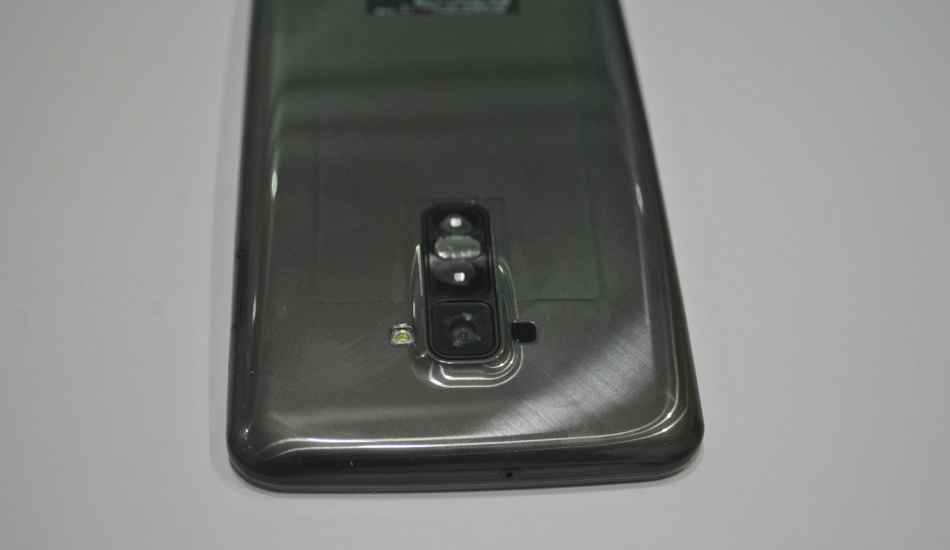
Considering its huge size, the power and volume button locations at the back is definitely a bliss but it also mean that you may accidentally smudge the camera lens while reaching out for the buttons. The micro SIM tray is located on the left side and not visible from the front. Meanwhile, the usual Micro USB port is at the bottom with a 3.5 mm Audio Jack next to it.
At the end of the day, we certainly like the curves and possibly it has the best curvature for easy viewing. There is no hint of metal on the body but it does not feel like a toy in the palms. As ambitious LG has aspired to be, LG G Flex certainly offers a design to interest any smartphone lover.
With reference to design, we would rate this smartphone 7 out of 10 because let’s face it – curve is not everything. This design was finalized after several prototypes. But at the end of the day, if an average user is not comfortable holding it, then it takes a lot of convincing to give it a try.
Rating for design – 7 out of 10
Display
While LG G Flex was teased online with more than actual curves, several mistook the term Flex with a flexible display. The display in the G Flex requires decent amount of pressure to be proven flexible but is certainly not bendable easily. LG has used a Curved Plastic-Organic Light Emitting Diode capacitive display packing the Real RGB technology configured to deliver better resolution. The Real RGB display technology is different in the sense that a single Pixel comprises of additional three subpixels – Red, Blue and Green, in order to deliver more precise image. The Curved POLED display does look fine and we must say just comfortable to the eyes by supporting 1280×720 pixel resolution.
To answer the obvious question, on the lack of full HD (1080p) resolution, is quite simple. The Curved POLED is quite fresh, and challenging to make at the same time. Probably the successor of the G Flex might have full HD resolution. This however, might be a step back for the users who already have moved to a full HD display bearing smartphones, irrespective of the screen size. The G Flex display pushes Pixel density of 245 pixels per inch and the difference is quite visible if the phone is placed next to full HD display touting devices such as HTC One Max.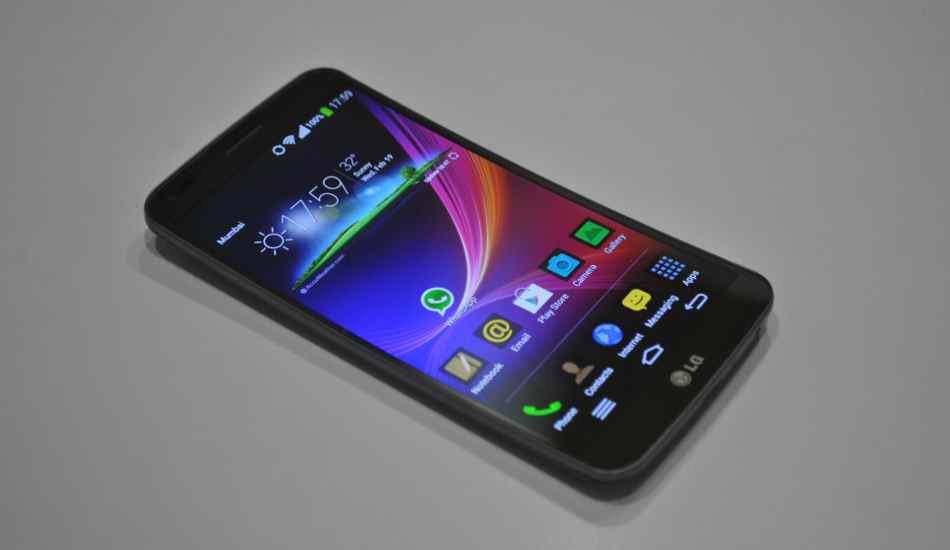
The G Flex has an OLED display by nature and its legibility under the sun was put to test. The curved display did not help much to read or watch anything on the display with ease. At any point of time, one does have to adjust the viewing angle to see an image or text comfortably. To be noted, that the legibility under the sun is just like any other device.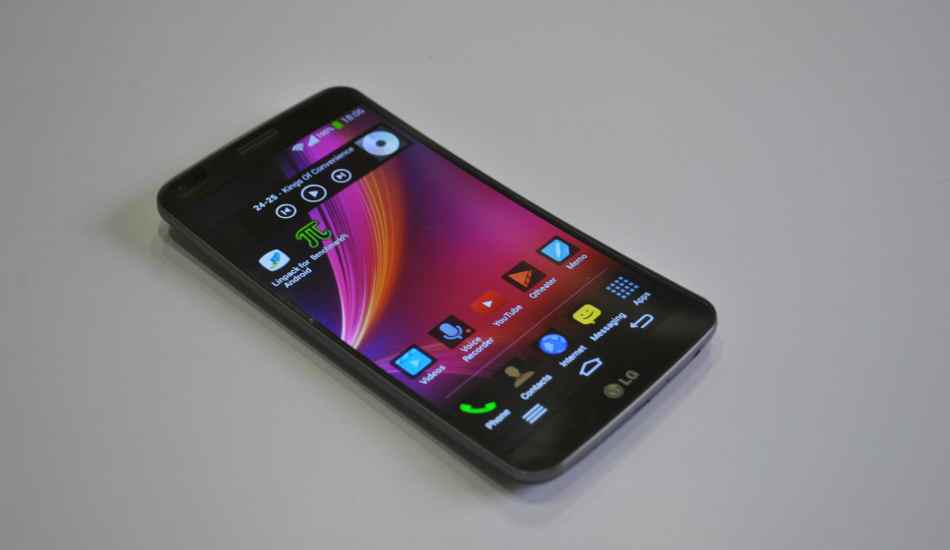
The display sub-menu in the settings also packs several interesting features such as changing the three “Front†buttons as per colour and order. Infact, one can also adjust the screen buttons for single hand operation with an option. That basically crams buttons on the either side of the screen based on the tilt. LG has introduced three viewing modes – Standard, Vivid and Natural to adjust colour profiles. Quite similar to options offered in the View modes on LG televisions. LG has also offered option to automatically adjust the screen-tone to match up with the colours in an image eventually teasing to save battery power.
LG has also offered Aspect Ratio Correction option that basically aids in adjusting the aspect ratio of select apps so that they do not appear distorted. However, when we tried enabling this option for WhatsApp and Twitter apps, the user interface as well as the text appeared hazy. Basically the icons and the text lost the crispness.
As a display, this may not be one of the best ones we have seen so far. As compared to Super LCD displays used by the HTC, the G Flex display simply does the average job. Any first time user of curved display would feel all the apps are slightly curved and something out of natural viewing.
Yet again, the curves did impress us but the display fell a little short of our expectations.
We would rate it 8 out of 10
Hardware and Performance
LG has packed the top of the line hardware inside the G Flex. The beast is powered by a 2.3 GHz Qualcomm Snapdragon 800 MSM8974 mobile system-on-chip integrating the Adreno 330 GPU for top quality graphics. The same mobile SoC has been used in most popular devices out there – Sony Xperia Z1, Xperia Z Ultra and even Nokia Lumia 1520. With this mobile SoC, LG coupled up 2 GB RAM to provide the best mobile hardware muscle to run the latest and the best apps in the Google Play Store. Apart from that, the full HD videos and games run without any hiccups.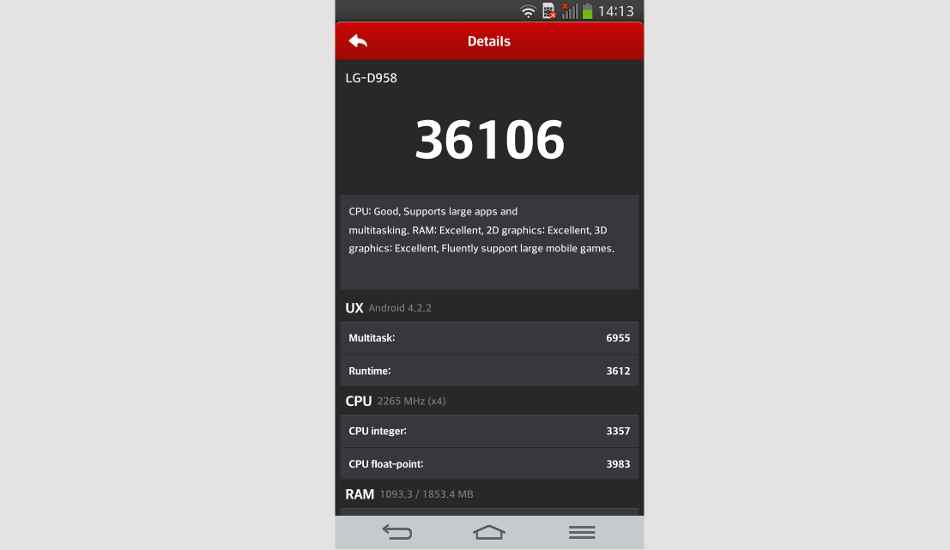
LG G Flex for India bears the model no LG-D958 which signifies the 4G LTE network band support. The G Flex supports 800 MHz, 1800 MHz and 2600 MHz frequency bands in India. For the 3G Networks, the G Flex D958 supports 900 MHz and 2100 MHz band to provide up to 42 Mbps theoretical download speeds. The real world experience of high speeds are totally network dependant. LG has integrated WiFi support with the most modern standards – 802.11 a/b/g/n/ac which means if you have a WLAN setup supporting 5.0 GHz spectrum then you can enjoy really fast file transfer or hassle-free content streaming.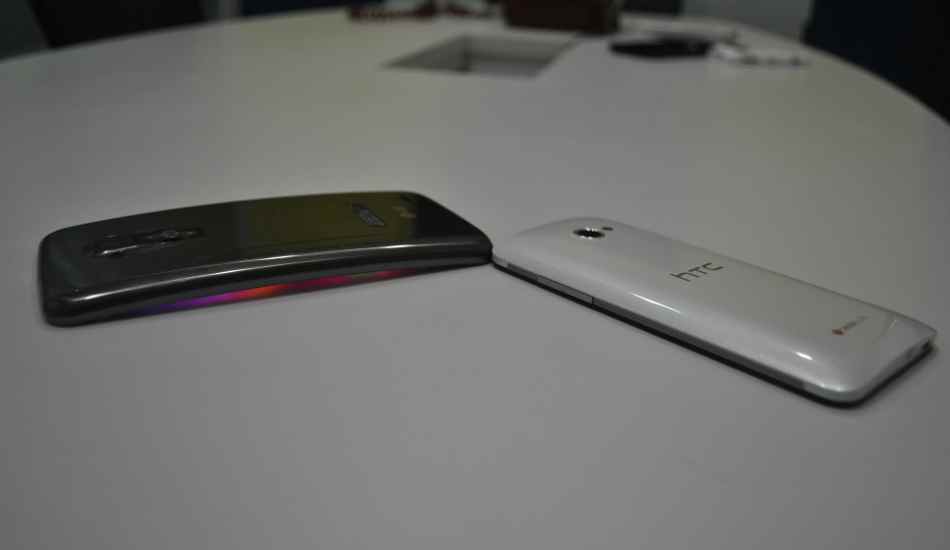
The G Flex also integrates Bluetooth 4.0 Low Energy Edition which may be great if you have to communicate with other Bluetooth 4.0 based device. There is Infrared port to use the smartphone as a touchscreen remote and there is Near Field Communication chip. Radio lovers can enjoy the Stereo FM radio with the RDS module in the bundled headsets. LG has placed the proximity sensor at the top in the front and integrated other usual sensors – Accelerometer and Gyroscope to be used best with the modern games. 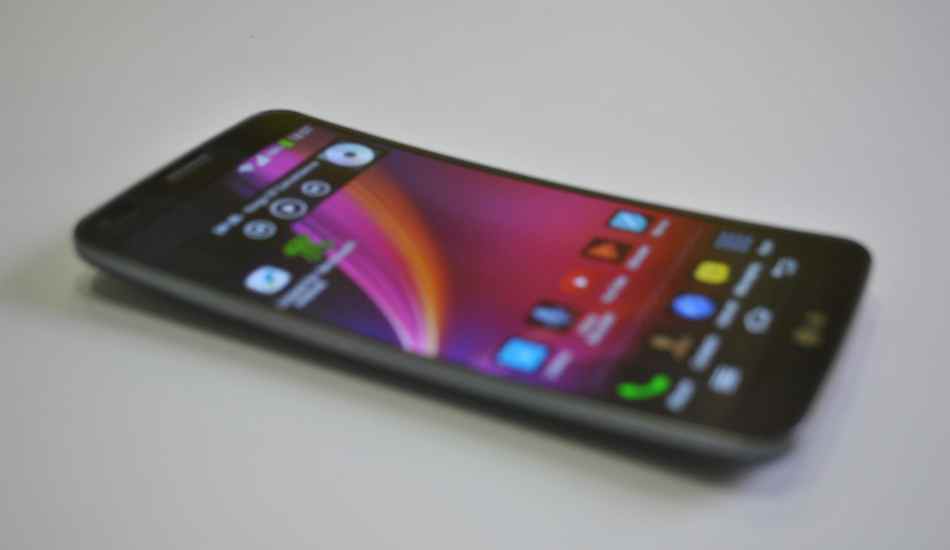
LG G Flex does not offer a memory card slot but instead there is 32 GB on-board storage out of which only 24.08 GB is actually available. That is more than enough to load couple of full HD movies and lossless audio albums. 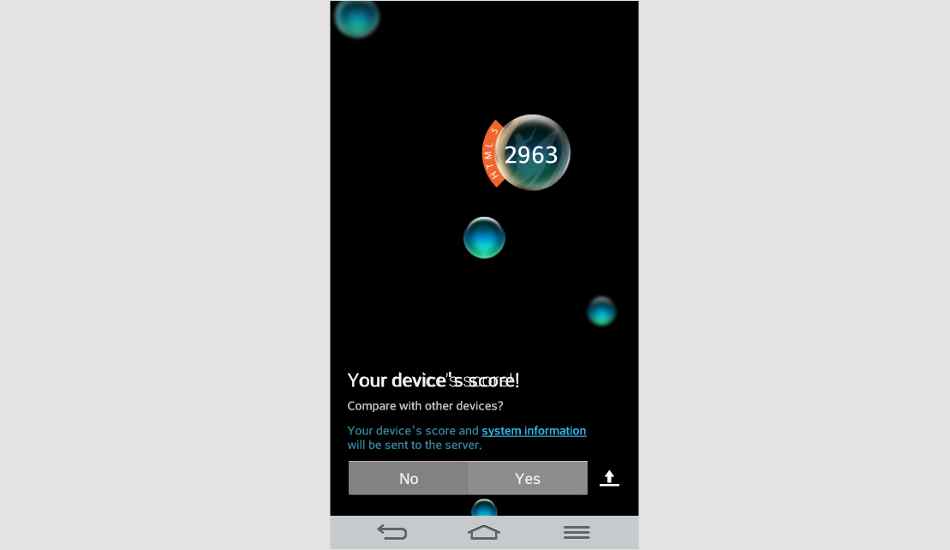
The overall usage experience of the G Flex was simply a bliss thanks to the stellar hardware. LG did push a small update without much of information on improvements and simply carrying enhancements for the LCD. Even the most heavy games such as Modern Combat 4: Zero Hour would ran smoothly.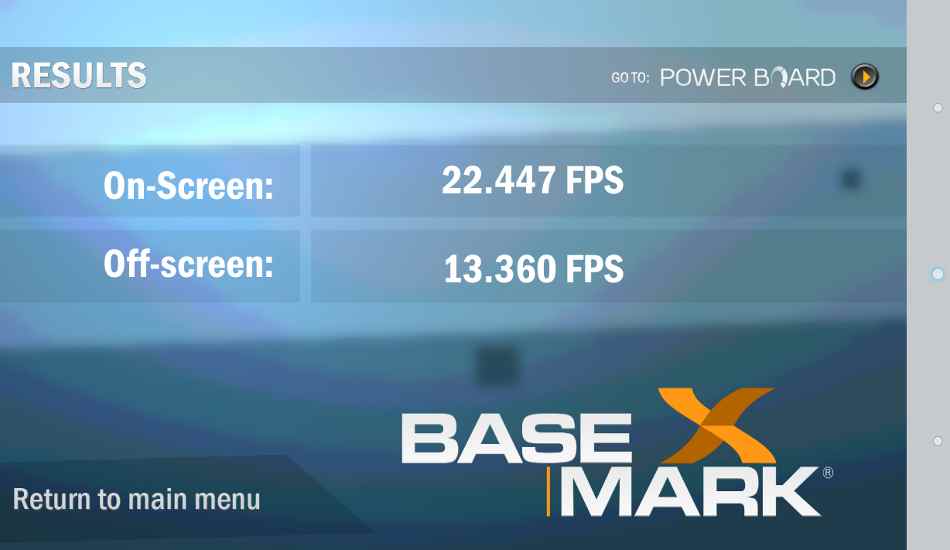
In the audio department, the lossless music files were sheer bliss to enjoy thanks to the Dolby Mobile sound enhancement. Thankfully the native music player app supported FLAC audio files and played them without hiccups. We used the Pure Surround sound audio effects to enjoy most of the music. Watching full HD videos is amazing too.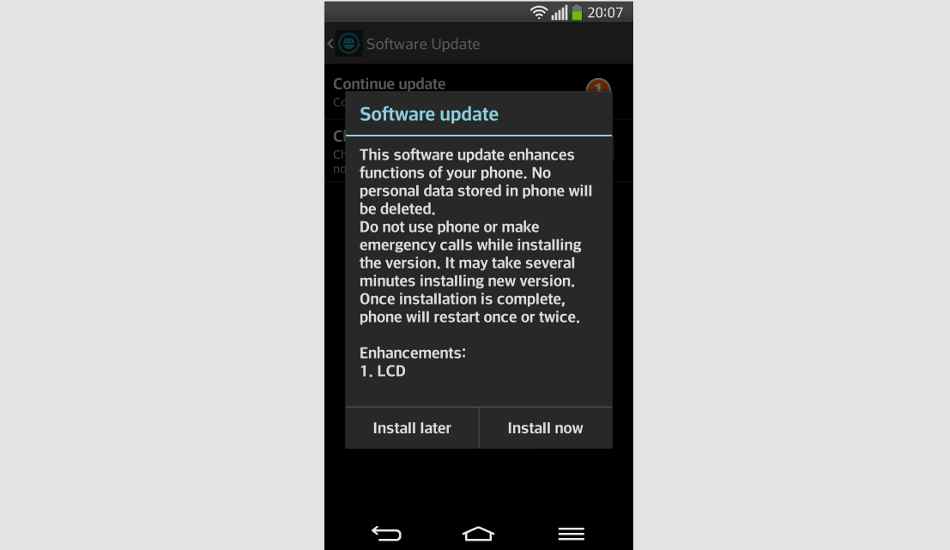
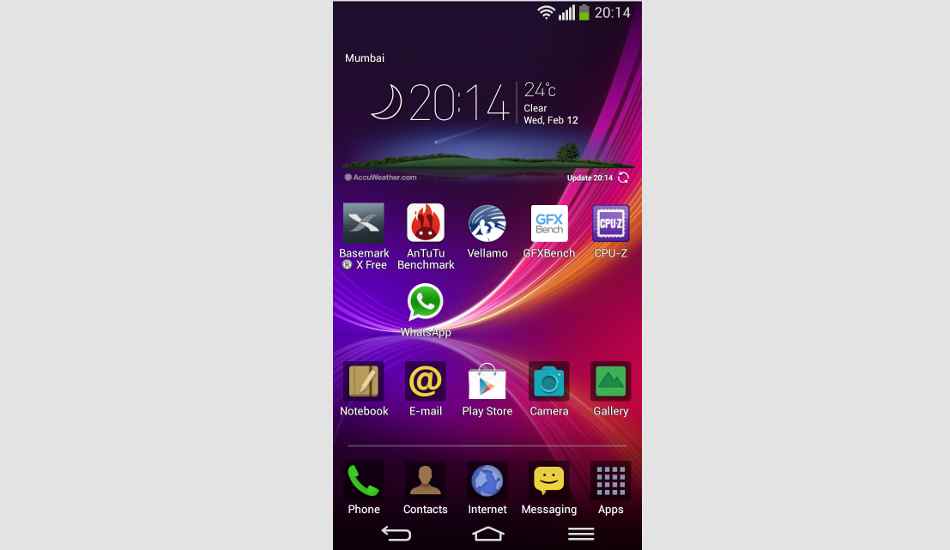
If you love multi-tasking then we recommend using the QSlide feature to watch a video and respond to your emails or post social network updates at the same time. The Split View takes the G Flex to the level of computers and actually allows productivity and entertainment at the same time.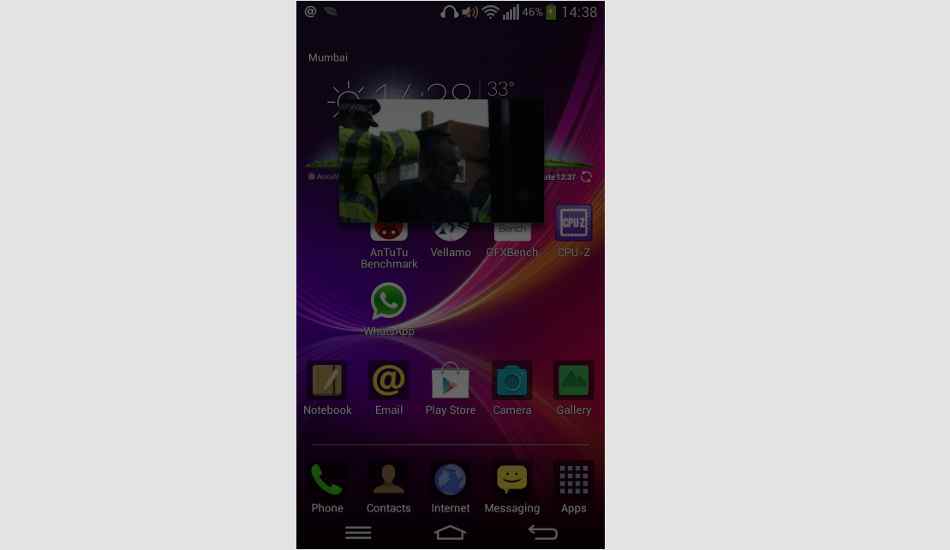
For location based services, the GPS lock happens quite quickly in about 2-3 seconds depending on the network strength. The G Flex offers GPS with A-GPS and GLONASS support to power the quick location locking.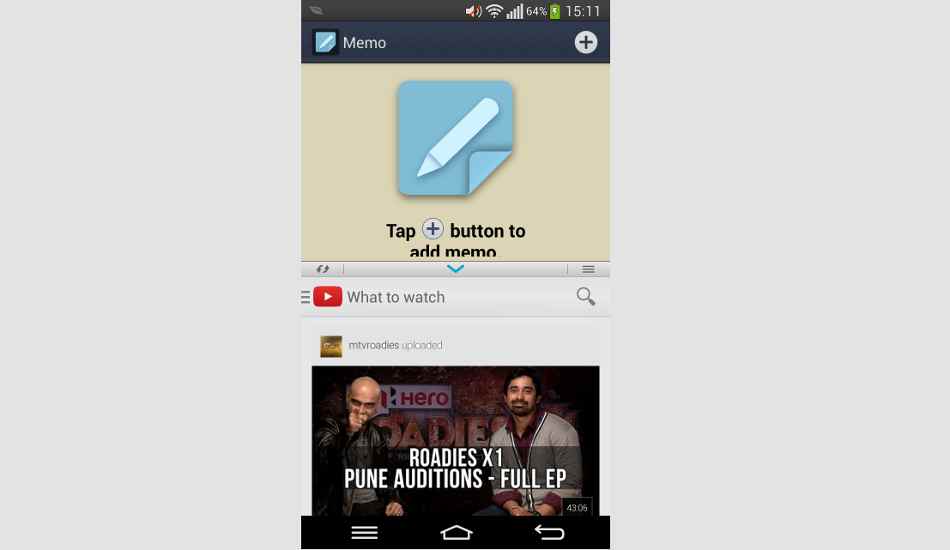
In the Benchmarks, the BenchmarkPi calculation was achieved in 101 seconds on an average. Meanwhile, in the AnTuTu Benchmark, the phone scored 36106 which was surprisingly higher when compared to LG G2 scoring 32917. Both smartphones use the identical hardware. Finally for the HTML5 test using the Vellamo benchmark, the G Flex scored 2963. Though these numbers may not be comprehensible by themselves, we can conclude that it has one of the best performance delivering hardware. 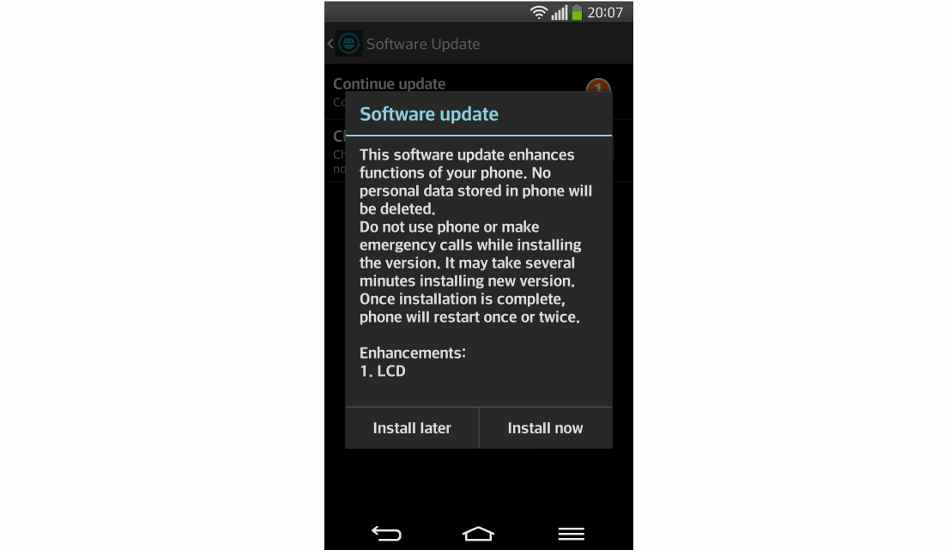
We rate the hardware and performance 10 out of 10
Camera
LG has packed a 1/3.2-inch size image sensor and f/2.4 Aperture in the G Flex. An LED flash rests on the side of the camera lens. The only feature missing here is the Optical Image Stabilisation which cripples the camera’s ability to take images even in low luminance situations. While the quality of the images taken in day time were identical to the ones found in the G2, the night shots took all the beating. Despite of a single LED Flash, the image sensor could not capture enough light to deliver least noise offering images.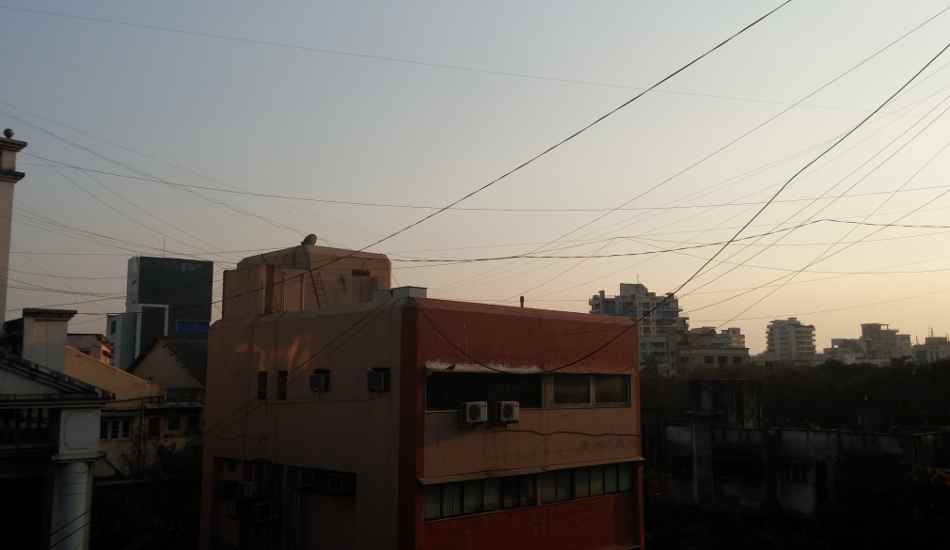
The user interface of the G Flex’s camera app is directly lifted from the LG G2. Users can mostly access the options using their thumbs on the right or left edge of the screen when used in the landscape mode. The camera app offers twelve different shooting modes – Normal, Shot&Clear, Dynamic Tone, Panorama, VR Panorama, Burst Shot, Beauty Shot, Dual camera, Time Catch Shot, Intelligent Auto, Sports and Night. Thankfully the menu illustrates the usage of these options with a thumbnail. 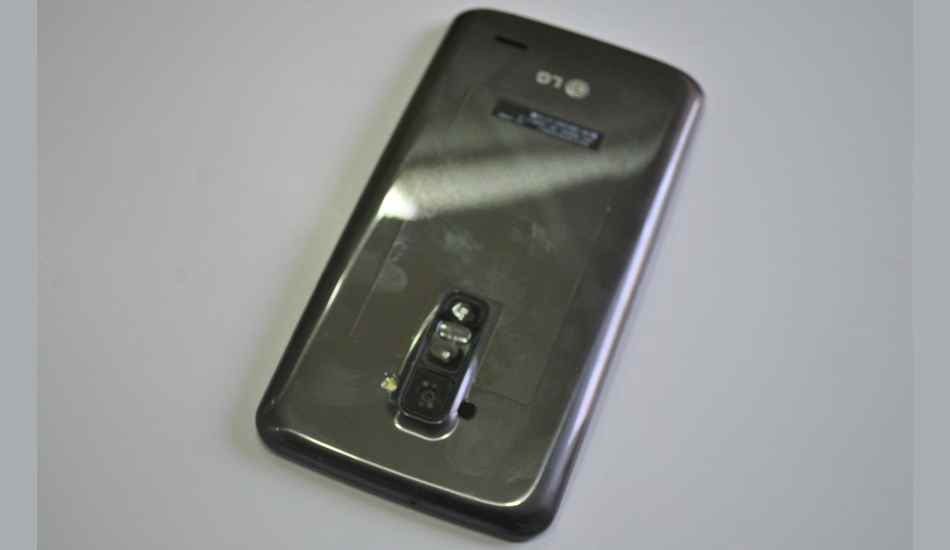
Whenever you hit the capture button, the display shows a white light for a split second and the resultant image gets stored on the phone. The capturing is quite fast compared to other Android devices that take couple of seconds to freeze the frame and then minimise the resultant photo in a corner. The image quality was quite similar to that found on the LG G2. With better lighting, the images captured look fine. However, with low lights and darkness, the camera struggles a bit.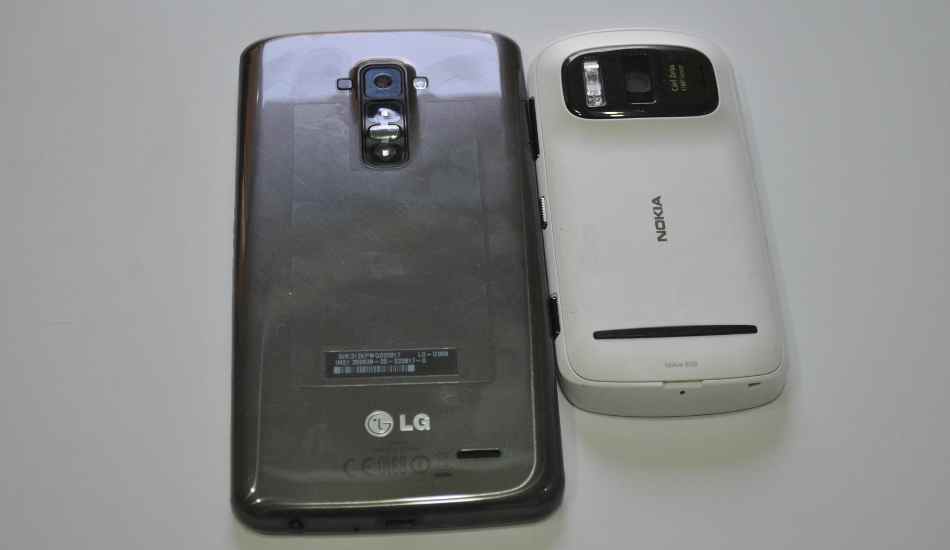
LG’s secret camera sauce tries to eradicate as much noise possible and that is why one can expect some loss in the details. The HDR mode needs a bit of fixing because it throws the contrast off balance. There are no live filters to be used before capturing an image but LG has bundled the Photo Studio for the basic image editing usage.
Video recording seems fine as the camera can capture up to Ultra HD videos (3840×2160) and lets one record a full HD video at 60 frames per second. Users will have to enable the anti-shaking feature from the Gear-icon Settings. The video mode offers Life Effect which allows changing the moods or face features of the human subject.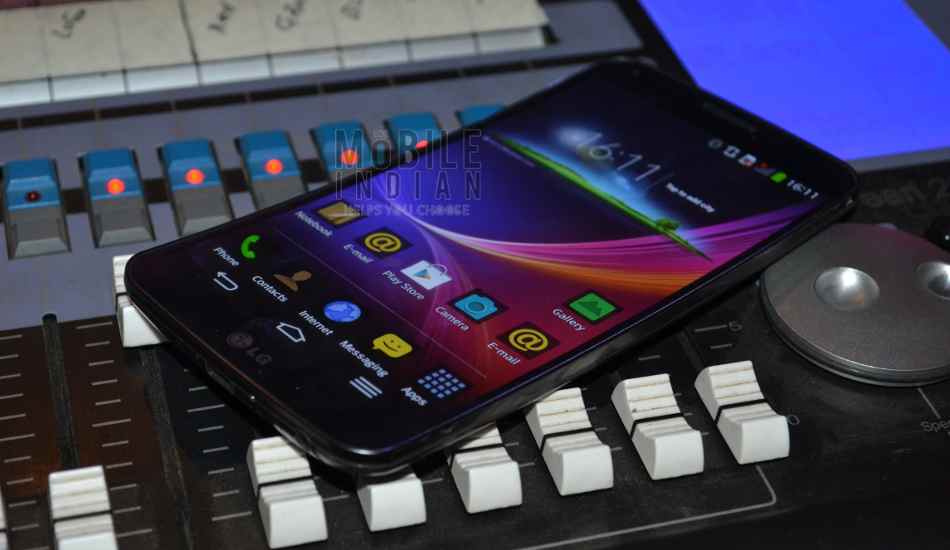
Similarly there is dual recording mode to capture videos using the rear and the front facing camera. Tracking zoom feature is like a zoom in a video feature where in the user needs to move the magnifying lens icon to select the area to be zoomed at. Using this, there are several options to use for the magnified small window such as Stamp, Oval Blur, Heart Shape, Instant, Star Shape and Fish Eye. This can be used to create those 1980s style movies and wedding videos.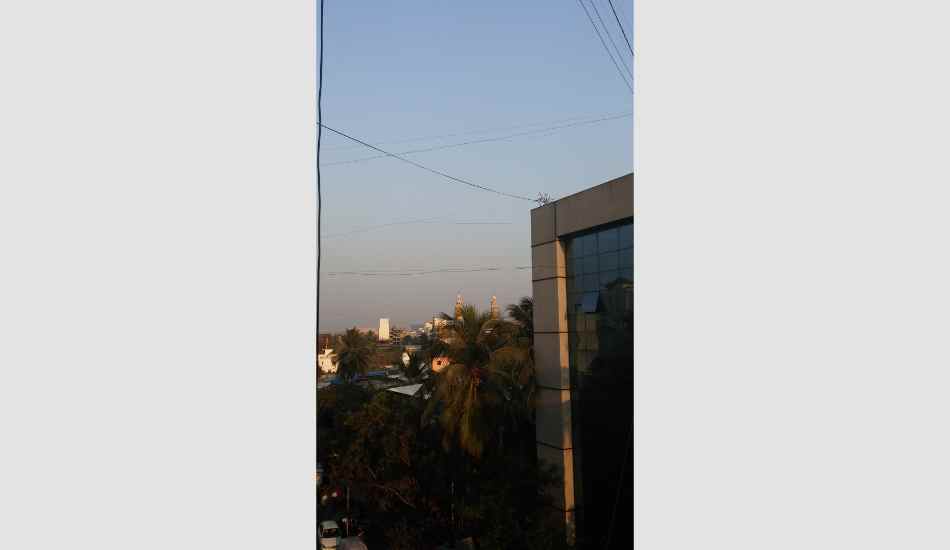
Overall camera performance is satisfactory but we would not place the camera in the one of the top ones. The phone misses out on Optical Image Stabilisation, one of the crucial and important features expected in high-end smartphones.
We would rate the camera 8 out of 10
Software and apps
LG has loaded the Android 4.2.2 Jelly Bean in the G Flex. We have been expecting the Android 4.3 Jelly Bean update out of the box. Let’s hope that the G Flex gets Android 4.4 KitKat update pretty soon. LG has used icons with dark background and square shapes for the native apps. The default app icons look very Google-like however, the translucent dark areas in the square around it take away the charm. We hope that LG can tweak those icons and make them appear like the ones in Android 4.4 KitKat update.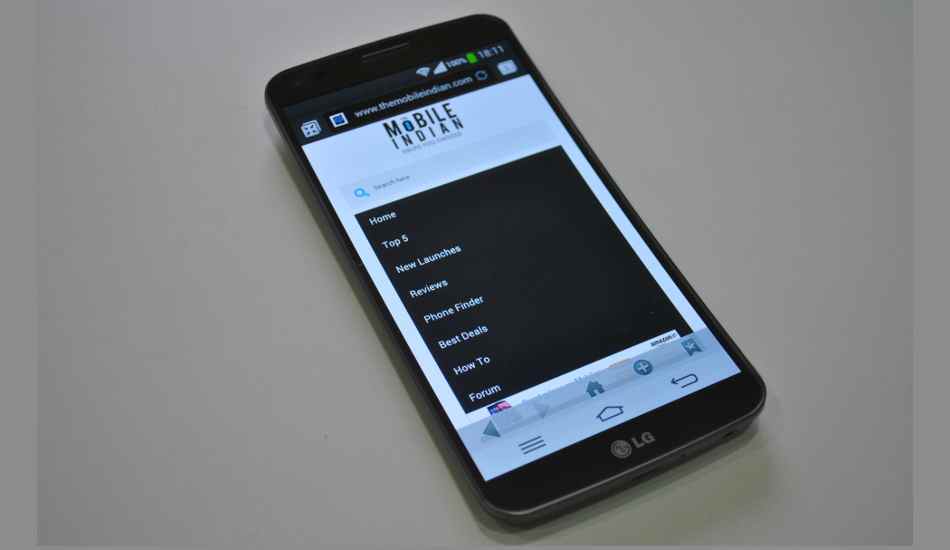
The Optimus UI certainly looks lighter and faster than the previous generation G series smartphones. LG has packed the basic apps such as File Manager, Music player, Video player, Notebook, Memo, Gallery, Dictionary, Tasks and Voice Recorder come pre-loaded. Users should be happy to see the Remote Call service, and Safety Care apps to contact the LG service center remotely for having any software issues fixed.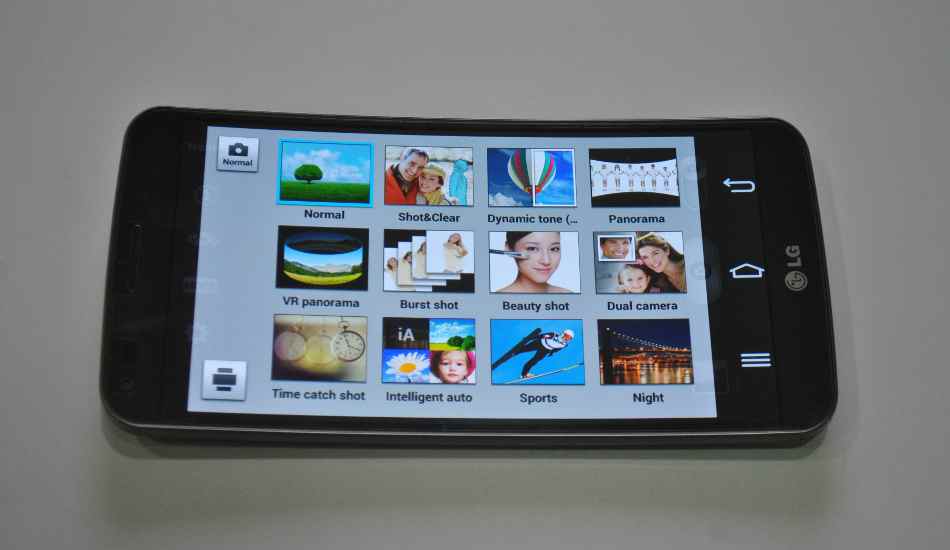
LG has added its Q series of applications and features smartly on the smartphone interface. The Quick Memo is quite addictive for quickly taking a screenshot, scribbling a note and sharing it with others. LG keyboard can be tamed to be used for single-handed operation and one can even try out the handwriting recognition – useful for digital signing. QSlide is the nifty feature to use two apps at the same time along with the new Split View. Keep the back software button pressed for few seconds to launch the drawer of Split View supporting apps. Just like Samsung, even LG has revamped the Settings menu in the G Flex. The multimedia file format support is quite fantastic in the music and video apps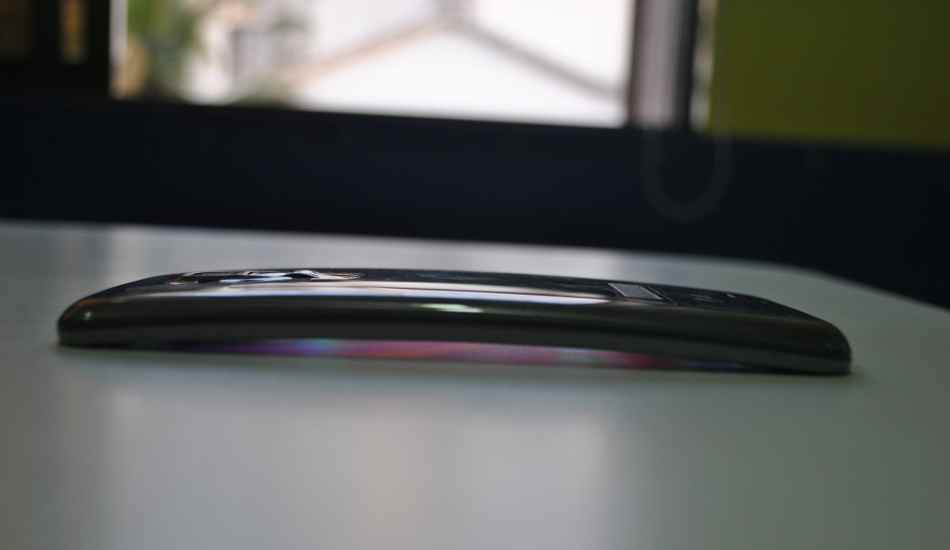
While we were anticipating something really different than usual, there is nothing so out of the usual to make the best of the curved display. In terms of software, LG meets up the requirements with long list of features but nothing out of the usual except the new Split View feature. LG has ensured that the keyboard and the keypad in the dialer can be customised to be used for single hand mode.
We would rate the software 7.5 out of 10
Battery Life
LG G Flex gets talked about mostly for the curved POLED display but rarely does one mention the curved battery. LG has powered this large screen smartphone with a monstrous 3500 mAh Lithium Polymer battery which remains fixed to the chassis. We have to accept that the non-removable battery is the de-facto standard for the most premium smartphones. Even with a somewhat heavy usage – the LG G Flex managed to run for two whole days. The usage involved several calls, mobile web browsing, listening to music and watching couple of videos. The G Flex is one of the best battery life promising smartphones from the current lot. With appropriate settings related to brightness, and several other features, one can easily make the phone for two days or more.
We rate the battery at 10 out of 10.


